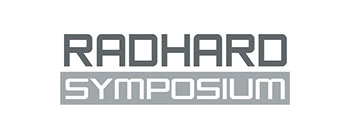Abstract

Introduction to Space Radiation Environment
Christoph Tscherne 1
1 Seibersdorf Labor GmbH, Austria
Abstract
Spacecraft in near-Earth orbits are exposed to a complex and harsh radiation environment that poses a great challenge to space mission design. Radiation accelerates the aging of EEE components, eventually leading to a decrease in performance or to a complete loss of functionality [1]. In order to face these challenges, it is necessary to understand the nature and effects of space radiation. The space radiation environments at Low Earth Orbits (LEO), Medium Earth Orbits (MEO) and Geostationary Earth Orbits (GEO) compose of three main types of primary radiation: Solar energetic particles (SEP), galactic cosmic radiation (GCR) and charged particles trapped in the Earth’s magnetic field [2, 3]. All three types are of different origin, vary greatly in energy and flux and underlie short-term and long-term variations modulated by the sun’s activity [4]. The presentation introduces the different types of orbits and discusses the origin and effects of the space radiation environment in detail. Characteristics of SEP, GCR and trapped particles are described and their influence on mission design and radiation hardness assurance (RHA) is reviewed [5, 6, 7].
References
| [1] | Poivey, Christian. "Total Ionizing and Non-Ionizing Dose Radiation Hardness Assurance." Short Course of NSREC 2017, 17 July 2017, New Orleans. USA. Presentation. |
| [2] | Holmes-Siedle, Andrew G., and Len Adams. Handbook of radiation effects. 2nd ed., Oxford University Press, 2002. |
| [3] | Santin, Giovanni. "Radiation Environments: Space, Avionics, Ground and Below." Short Course of RADECS 2017, 2 Oct. 2017, Geneva. Switzerland. Presentation. |
| [4] | Viereck, Rodney. "Space Weather: What is it? How Will it Affect You?" NOAA Space Environment Center, 2007, Boulder Colorado. USA. Presentation. |
| [5] | ECSS-Q-ST-60-15C. “Radiation hardness assurance – EEE components”, October 2012. |
| [6] | ECSS-E-ST-10-04C. “Space Environment”, June 2020. |
| [7] | SPENVIS - The European Space Agency (ESA) Space Environment Information System (SPENVIS), available online at http://swe.ssa.esa.int/; https://www.spenvis.oma.be/ |
Acknowledgments
We acknowledge the insightful talks and presentations of the lecturers of the RADECS and NSREC short courses and the information provided by SPENVIS, ESA's Space Environment Information System (http://swe.ssa.esa.int/; https://www.spenvis.oma.be/).
![[Translate to English:] [Translate to English:]](/fileadmin/uploads/intranet/events/radhard/2023/header-radhard2023.jpg)
